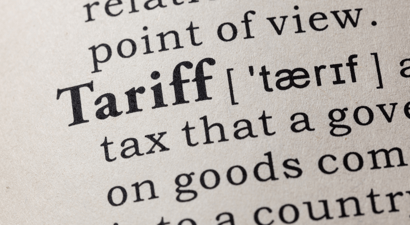RISKS ASSOCIATED WITH A HOUSE BILL OF LADING
The South African Association of Freight Forwarders (“SAAFF”) has with fanfare announced the imminent launch of the digital FIATA bill of lading (“FBL”). The FBL is a contractual carrier’s bill of lading - commonly referred to as a house bill of lading (“HBL”). Thus, while cargo might be shipped under the ocean bill of lading issued by the actual ocean carrier, the HBL and FBL allow a forwarder to control the movement of cargo on behalf of their principal who is exporting goods by sea.
The attractions of the FBL are that:
- it is on internationally accepted terms of carriage;
- it is approved by the International Chamber of Commerce and aligned to UNCTAD/ICC Rules for Multimodal Transport;
- the FBL allows for the multimodal transportation of goods, as well as the provision of digitalization and tracking options which require secure access and so are designed to avoid fraudulent manipulation.
But the forwarder is not the actual carrier. The shipping line/ocean carrier will perform any sea leg. The ocean carrier will issue an ocean (or master) bill of lading (MBL), which governs the terms of actual ocean carriage. The forwarder will usually be reflected as the shipper under the MBL and will appoint a release agent (either a third-party network agent or a local branch of the forwarder) in the country of destination to act as consignee and to control the release of the cargo under the forwarder’s instructions, or potentially to arrange the next leg of on-carriage by whatever mode of transport applies.
Where the freight forwarder is offering a door-to-door multimodal service, the forwarder thus issues a HBL which governs the entire geographical contractual arrangement as between shipper and the forwarder and consignee to the extent that it becomes the holder of the HBL.
The freight forwarder is usually able to procure a more preferential rate with the shipping line/ocean carrier which, after a suitable mark-up, it is able to pass along to its principal.
A HBL is also conveniently used where smaller parcels of goods are consolidated into a single container i.e. for less than container loads (LCL) shipments. The consolidator/forwarder holds the MBL and then issues HBL to the individual shippers for the individual parcels.
In instances where a HBL is used, there are two back-to-back contracts governing the carriage – the MBL and the HBL, the terms of which may differ substantially. In addition, the ocean carrier’s landside tariffs will also apply to any landside operations.
So, on paper at least the FBL appears to be ideal. That said, can there be risk?
The MBL normally casts possible liability for freight and related costs, such as storage, demurrage/detention and the like, widely; “merchant” is defined to include the shipper, holder, consignee, receiver of the goods, any person owning or entitled to the possession of the goods or of this bill of lading and anyone acting on behalf of such person.
Many an unsuspecting release agent designated as the consignee under the MBL has been left facing astronomical costs after an authority detains goods, or where the actual intended consignee under the HBL refuses or fails to take delivery of the cargo. The release agent or parties designated as the consignee under the MBL must understand the full extent of costs that they are potentially at risk for. The same applies in respect of the forwarder who is designated as shipper under the MBL, and potentially on the hook for an array of costs.
Experience has shown that exporters/shippers and their customers are sometimes faced with the untenable situation where an ocean carrier refuses to release the MBL because the forwarder owes monies in respect of other unrelated shipments, or where they find themselves with a cash flow problem.
You will appreciate the complexities of where cargo is governed by two different contracts (the MBL and the HBL) and the terms as to law and jurisdiction differ, or where certain clauses may be excluded, for instance a Himalaya clause or general average clause. So too, the contracts when properly construed might provide for different points at which the carriage ends, or may include different conventions – for instance where MBL includes the Hague Visby Rules (a set of international rules governing the carrier’s obligations, rights, defences and limits of liability), and the HBL does not, may mean that the ocean carrier versus the contractual carrier’s obligations, rights, defences and limits of liability may be interpreted differently.
In the case of Australian Capital Financial Management Pty Ltd v Freight Solutions (Vic) Pty Ltd [2017] NSWDC 279 an Australian court, held that a freight forwarder engaged in misleading and deceptive conduct. The Court cited a textbook description of bills of lading: “Like an elephant, a bill of lading is generally easier to recognise than to define”.
In a subsequent article, the TT Club warned that the case clearly demonstrated that freight forwarders need to consider carefully whether to issue a house bill of lading for a consignment. When doing so, there are clear steps to take to protect the rights of all stakeholders and avoid unforeseen exposures. Role players must be made aware of the inherent risks as opposed to blindly resorting to the use of standardised bills of lading. As the old adage goes, forewarned is forearmed.





